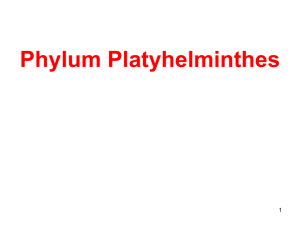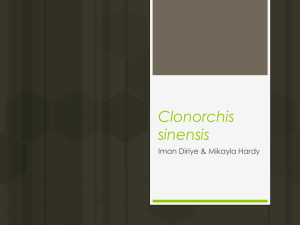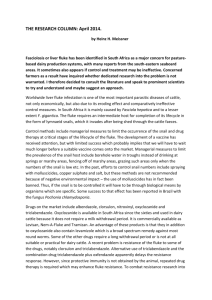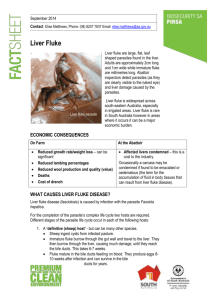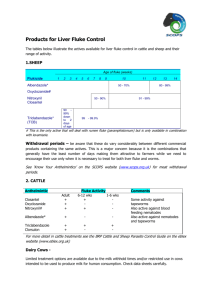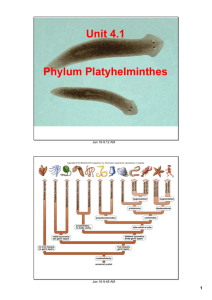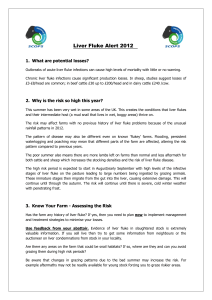Liver Fluke Diagnostics and Detection
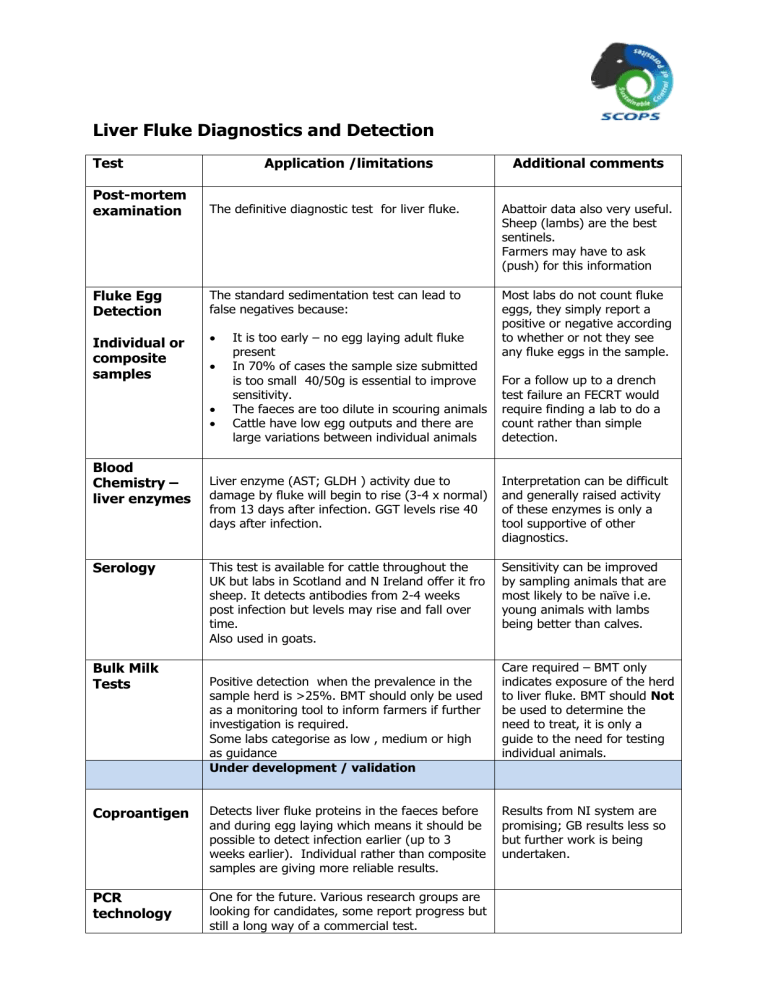
Liver Fluke Diagnostics and Detection
Test
Post-mortem examination
Fluke Egg
Detection
Individual or composite samples
Blood
Chemistry – liver enzymes
Serology
Bulk Milk
Tests
Coproantigen
PCR technology
Application /limitations
The definitive diagnostic test for liver fluke.
The standard sedimentation test can lead to false negatives because:
It is too early – no egg laying adult fluke present
In 70% of cases the sample size submitted is too small 40/50g is essential to improve sensitivity.
The faeces are too dilute in scouring animals
Cattle have low egg outputs and there are large variations between individual animals
Liver enzyme (AST; GLDH ) activity due to damage by fluke will begin to rise (3-4 x normal) from 13 days after infection. GGT levels rise 40 days after infection.
Additional comments
Abattoir data also very useful.
Sheep (lambs) are the best sentinels.
Farmers may have to ask
(push) for this information
Most labs do not count fluke eggs, they simply report a positive or negative according to whether or not they see any fluke eggs in the sample.
For a follow up to a drench test failure an FECRT would require finding a lab to do a count rather than simple detection.
Interpretation can be difficult and generally raised activity of these enzymes is only a tool supportive of other diagnostics.
Sensitivity can be improved by sampling animals that are most likely to be naïve i.e. young animals with lambs being better than calves.
This test is available for cattle throughout the
UK but labs in Scotland and N Ireland offer it fro sheep. It detects antibodies from 2-4 weeks post infection but levels may rise and fall over time.
Also used in goats.
Positive detection when the prevalence in the sample herd is >25%. BMT should only be used as a monitoring tool to inform farmers if further investigation is required.
Some labs categorise as low , medium or high as guidance
Under development / validation
Detects liver fluke proteins in the faeces before and during egg laying which means it should be possible to detect infection earlier (up to 3 weeks earlier). Individual rather than composite samples are giving more reliable results.
One for the future. Various research groups are looking for candidates, some report progress but still a long way of a commercial test.
Care required – BMT only indicates exposure of the herd to liver fluke. BMT should Not be used to determine the need to treat, it is only a guide to the need for testing individual animals.
Results from NI system are promising; GB results less so but further work is being undertaken.
Detecting Anthelmintic Resistance in Liver Fluke
Test
Drench Check
FECRT
Application/limitations
Faeces sample positive for fluke pretreatment followed by a second sample 21 days after treatment
Additional Comments
Simple test to indicate the need for further investigation.
Not applicable if no adult fluke present (i.e. negative FEC at treatment).
Note: TCBZ only. There are no validated tests for either closantel or nitroxynil
Histology
Egg Hatch Assay
Molecular markers
This requires a count of fluke eggs rather than simply detection.
Resistance said to be present with reduction of <80% after 3 weeks.
Under development / validation
Distinct changes in the histology of resistant fluke have been identified.
Requires the recovery of live fluke which poses a practical issue but results are promising.
May have potential but currently nothing validated.
Under investigation for candidates
Fairweather and Hanna group
NI

